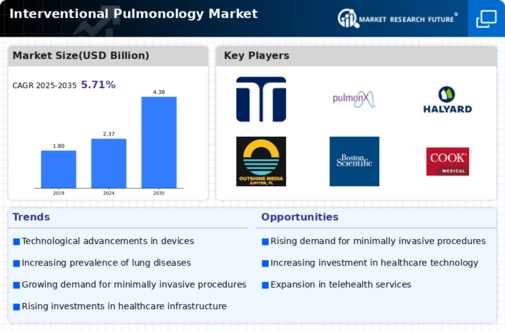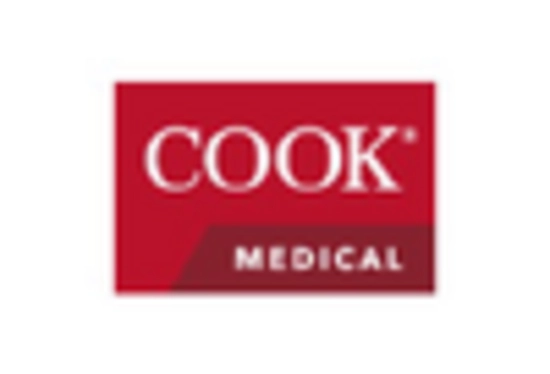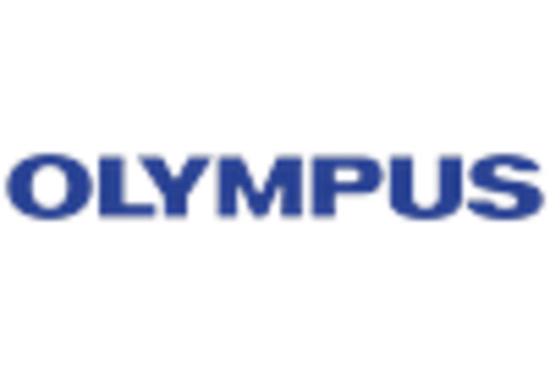Increase in Healthcare Expenditure
The rise in healthcare expenditure across various regions is significantly impacting the Interventional Pulmonology Market. As governments and private sectors allocate more funds towards healthcare, there is a corresponding increase in the availability of advanced medical technologies and treatments. This financial commitment enables healthcare facilities to invest in state-of-the-art interventional pulmonology equipment and training for medical professionals. The trend of increasing healthcare budgets is likely to facilitate the adoption of innovative procedures, thereby enhancing the overall quality of care for patients with respiratory diseases. As healthcare expenditure continues to grow, the interventional pulmonology market is expected to benefit from improved access to advanced treatment options.
Rising Prevalence of Respiratory Diseases
The increasing incidence of respiratory diseases, such as chronic obstructive pulmonary disease (COPD) and lung cancer, is a primary driver for the Interventional Pulmonology Market. According to recent data, respiratory diseases account for a substantial portion of global morbidity and mortality. This trend necessitates advanced interventional techniques to manage these conditions effectively. The demand for innovative treatment options is likely to rise as the population ages and environmental factors contribute to respiratory health issues. Consequently, healthcare providers are increasingly adopting interventional pulmonology procedures to enhance patient outcomes and reduce hospital stays. This growing prevalence of respiratory ailments is expected to propel the market forward, as more patients seek specialized care and advanced therapeutic interventions.
Aging Population and Demand for Specialized Care
The aging population is a significant driver of the Interventional Pulmonology Market. As individuals age, they are more susceptible to respiratory diseases, necessitating specialized care and interventions. The demographic shift towards an older population is prompting healthcare systems to adapt and expand their services to meet the needs of this demographic. This trend is likely to increase the demand for interventional pulmonology procedures, as older patients often require more complex and tailored treatment options. Additionally, the focus on improving the quality of life for elderly patients is driving the adoption of minimally invasive techniques, which are associated with shorter recovery times and reduced complications. The intersection of an aging population and the need for specialized pulmonary care is expected to propel market growth.
Growing Awareness and Education on Pulmonary Health
There is a notable increase in awareness regarding pulmonary health, which is driving the Interventional Pulmonology Market. Educational campaigns and initiatives aimed at both healthcare professionals and the general public are fostering a better understanding of respiratory diseases and their management. This heightened awareness is leading to earlier diagnosis and treatment, which is essential for improving patient outcomes. Furthermore, as patients become more informed about available interventional options, they are more likely to seek specialized care. The emphasis on pulmonary health education is expected to contribute to the growth of the market, as it encourages proactive management of respiratory conditions and promotes the adoption of interventional techniques.
Technological Innovations in Interventional Pulmonology
Technological advancements play a crucial role in shaping the Interventional Pulmonology Market. Innovations such as robotic-assisted procedures, advanced imaging techniques, and minimally invasive tools have revolutionized the way pulmonary conditions are diagnosed and treated. For instance, the integration of endobronchial ultrasound (EBUS) has significantly improved the accuracy of lung biopsies, leading to better patient outcomes. The market is witnessing a surge in the development of novel devices that enhance procedural efficiency and safety. As these technologies continue to evolve, they are likely to attract more healthcare facilities to adopt interventional pulmonology practices, thereby expanding the market. The ongoing research and development efforts in this field suggest a promising future for technological integration in pulmonary interventions.


















Leave a Comment